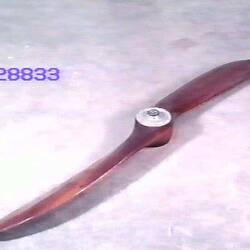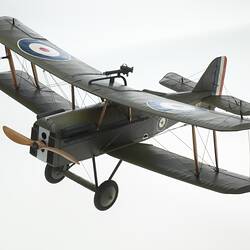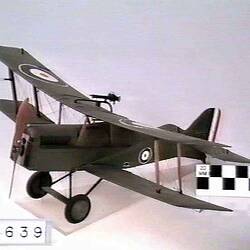Summary
Together with the Sopwith Camel, the Royal Aircraft Factory SE5a was the most important and numerous British fighter aircraft of the First World War. It was powered by either a Wolseley Viper or Hispano Suiza engine. The SE5a was flown in France by No. 2 Squadron , Australian Flying Corps and was later supplied to Australia by Britain as part of the 'Imperial Gift' of aircraft, engines and equipment which was later used to assist establishment of the Australian Air Force in March 1921 (permission to grant the title 'Royal was not given until August 1921). The SE5a continued in RAAF service until 1929 when it was replaced by the Bristol Bulldog.
The two-blade laminated mahogony propeller in the Museum's collection was donated in 1973. It is marked 'Wolseley Viper' which was the engine type used in all RAAF SE 5a aircraft. It carries the numbers '287405' and '596LL'. A 'Smiths' pressure gauge has been mounted in the hub of the propeller which was a typical decorative use of an obsolete wooden propeller although this example has fortunately not had the blades sawn off.
More Information
-
Collecting Areas
-
Acquisition Information
Donation from Mrs E. M. Allan, Oct 1973
-
Manufacturer (Possible)
-
Classification
-
Category
-
Discipline
-
Type of item
-
Dimensions
2400 mm (Outside Diameter)
-
Keywords
Aeroplane Components, Aircraft Propellers, Fighters, Military Aircraft, Wars & Conflicts, World War I, 1914-1918





